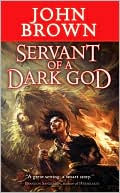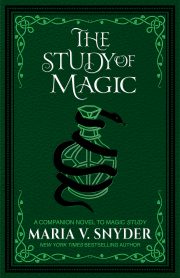Key Conditions for Suspense:
Part 13 – Make the problem hard to solve
with growing troubles & surprise
by John D. Brown
 The following is part of a continuing series. If you wish to start at the beginning, head to It’s All About The Reader.
The following is part of a continuing series. If you wish to start at the beginning, head to It’s All About The Reader.
As I stated in the last two posts, there are four types of things that make the problem hard to solve—disadvantages, conflicts, growing troubles, and surprise. In this post I’ll discuss the last two. Once again, remember: these aren’t ingredients to a recipe; they’re options. Their purpose is to make the problem harder to solve so the reader can worry.
Make Progress with Continuing & Growing Troubles
The third way to make a problem harder to solve is by making it grow despite, or because of, the character’s actions.
But that doesn’t sound like progress–how do you make progress if the character’s troubles not only continue, but grow? Simple, the progress I’m talking about is in sharpening the reader’s tension. As the plot complicates, the reader’s tension grows.
Think about the flip side of this. The moment you solve all the problems in the story, the story is over because the readers have nothing more to worry about. Troubles allow the story to progress and grow.
This doesn’t mean the characters can’t solve small parts of the problem along the way. It doesn’t mean good things can’t happen to the character. After all, we want to fear AND hope for the characters.
For example, in the middle of The Hunger Games, we get two nice chapters where things are looking up for Katniss. Of course, we don’t want to think about the fact that she’s going to have to eventually kill the person she’s teamed up with. Or the fact that the careers are out there killing off everyone else, narrowing down the contestants until there will be nobody else but Katniss to hunt. So Katniss still has problems, but for a few chapters we get a break from the tension. And then we’re plunged back in, worse than before.
So we want small successes. But despite the successes, our character still fails to solve the problem and, very often, makes it worse.
How does this happen? As our character attempts to solve the problem, she will experience disasters, calamities, setbacks, misfortunes, upsets, betrayals, unforeseen obstacles, desertions, and failures. Plans will go awry. The villain will counter with shocking blows. The character will learn things that twist her (and the reader’s) understanding of the problem in more dangerous directions. The problem will become more intense (see the first posts in the series), more immediate, probable, significant, and specific. More in the character’s life will be put at risk.
Maybe the character starts the story being personally threatened by the villain, but as the story progresses the villain begins to threaten the hero’s children. Maybe our inexperienced team sets out, and halfway through the story their leader (Gandalf or Obi-wan Kenobi), the star player on their team, is killed. Maybe our airplane gets shot and the fuel leaks out, and our perfect escape crashes into the mountains only miles from where we began.
All of these plot turns keep the tension building.
Another thing they do is keep the story from becoming monotonous. A fight where the positions of the hero and the opposition remain static quickly begins to bore. Think of a football game where the score remains at 0-0 for three and half quarters. Both sides keep getting the ball and keep having to punt after three downs. Nobody gets injured. Nobody makes any yardage. Nothing changes.
Boring.
So we keep the plot turning, adding complications and revelations and conflicts and surprises. We keep giving the reader something new to increase their hopes or fears.
Avoid Predictability with Surprise
The last way we make the problem hard to solve is by making sure things do not work as planned.
Readers will have a hard time hoping and fearing if they can predict what will happen. When they pull back and cogitate, they may suspect in the end that the hero will win. But if we’re telling the story effectively, they won’t be pulling back much. They’ll be focused, the details of the immediate events filling up the capacity of their working memory. They’ll be living in the moment on the page and worrying about the characters. And the surprises we deliver will put them off balance. They’ll make it so the reader can’t predict exactly what will happen next.
Remember: reader’s don’t want to know what WILL happen. They want to know what MIGHT happen and feel tension about the possibilities.
So some surprises will convince the reader that our hero MIGHT indeed lose. The hero’s smart and bold plan, which everyone expects to work, fails. The one sidekick we thought we could count on turns traitor. The opposition tricks our hero into a setup that now has the cops thinking he committed the crime.
Other surprises will give the reader reason to think our hero still MIGHT win. Our hero gets a critical clue that leads her one step closer to the killer. Maybe she beats up the villain’s henchman and escapes. Maybe the sidekick who rejected her at first decides to come help after all. Of course, we can’t give our hero an easy go of it. We still need readers to fear. But our characters always have to have a chance, even if it’s tiny.
We evoke surprise in the reader when we lead them to expect one thing and deliver something else. Sometimes you do that by structuring the story so the lead character, and the reader, don’t have all the facts up front. And the current set of facts lead to one conclusion. Sometimes you skillfully plant ideas into the reader’s mind that misdirect their expectations. A classic example of this is the red herring in mysteries.
However you do it, surprises need to be believable to work. They need to be logical. Readers will not hope or fear if the opportunity or threat is hokey or forced. Rubber snakes only scare people when they’re mistaken for the real thing. So give the audience surprises that take their breath away, and watch their tension and delight rise.
Of course, it’s good to know you need to make the problem hard to solve, but how do you use all the obstacles to develop the plot? How do you layer them in? How do you start and move forward?
You follow the story cycle, which is simply a model of how we humans go about solving problems, and apply the concepts listed above in ways that make sense to you and spark your interest. That story cycle is what I’ll discuss in the next few posts.
Happiness,
John
•••
 John Brown is an award-winning novelist and short story writer. Servant of a Dark God, the first book in his epic fantasy series, was published by Tor Books and is now out in paperback. Forthcoming novels in the series include Curse of a Dark God and Dark God’s Glory. He currently lives with his wife and four daughters in the hinterlands of Utah where one encounters much fresh air, many good-hearted ranchers, and an occasional wolf.
John Brown is an award-winning novelist and short story writer. Servant of a Dark God, the first book in his epic fantasy series, was published by Tor Books and is now out in paperback. Forthcoming novels in the series include Curse of a Dark God and Dark God’s Glory. He currently lives with his wife and four daughters in the hinterlands of Utah where one encounters much fresh air, many good-hearted ranchers, and an occasional wolf.
For a list of all of the posts in this series thus far, click on the “John D. Brown” tag.


